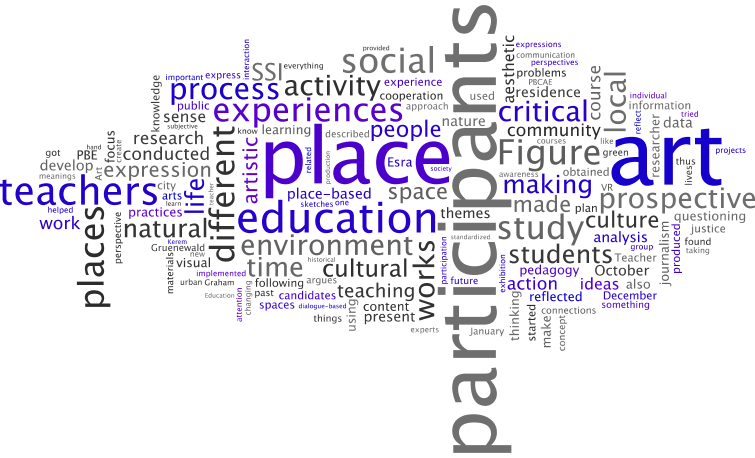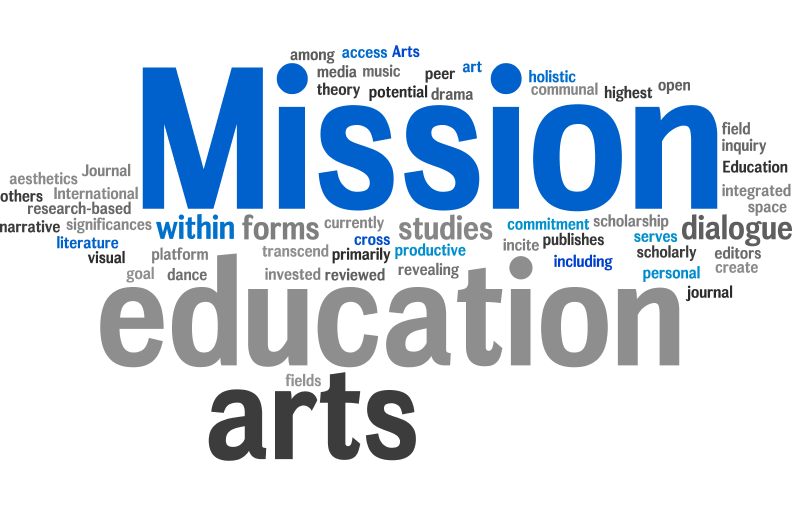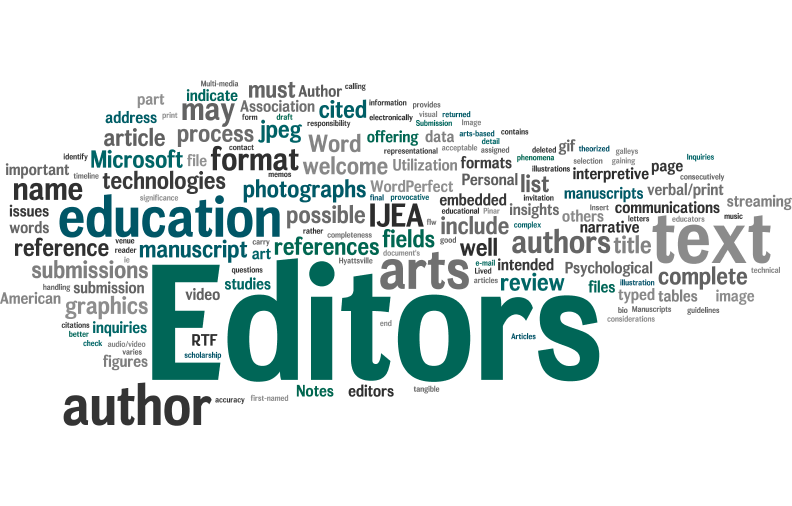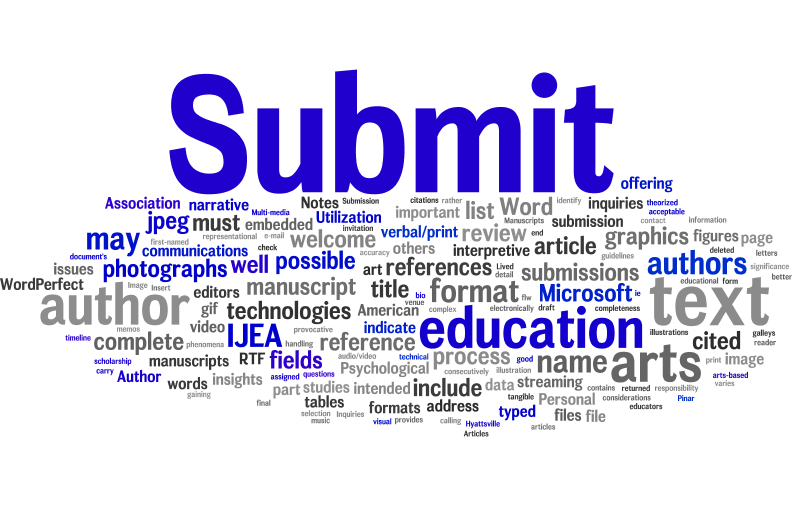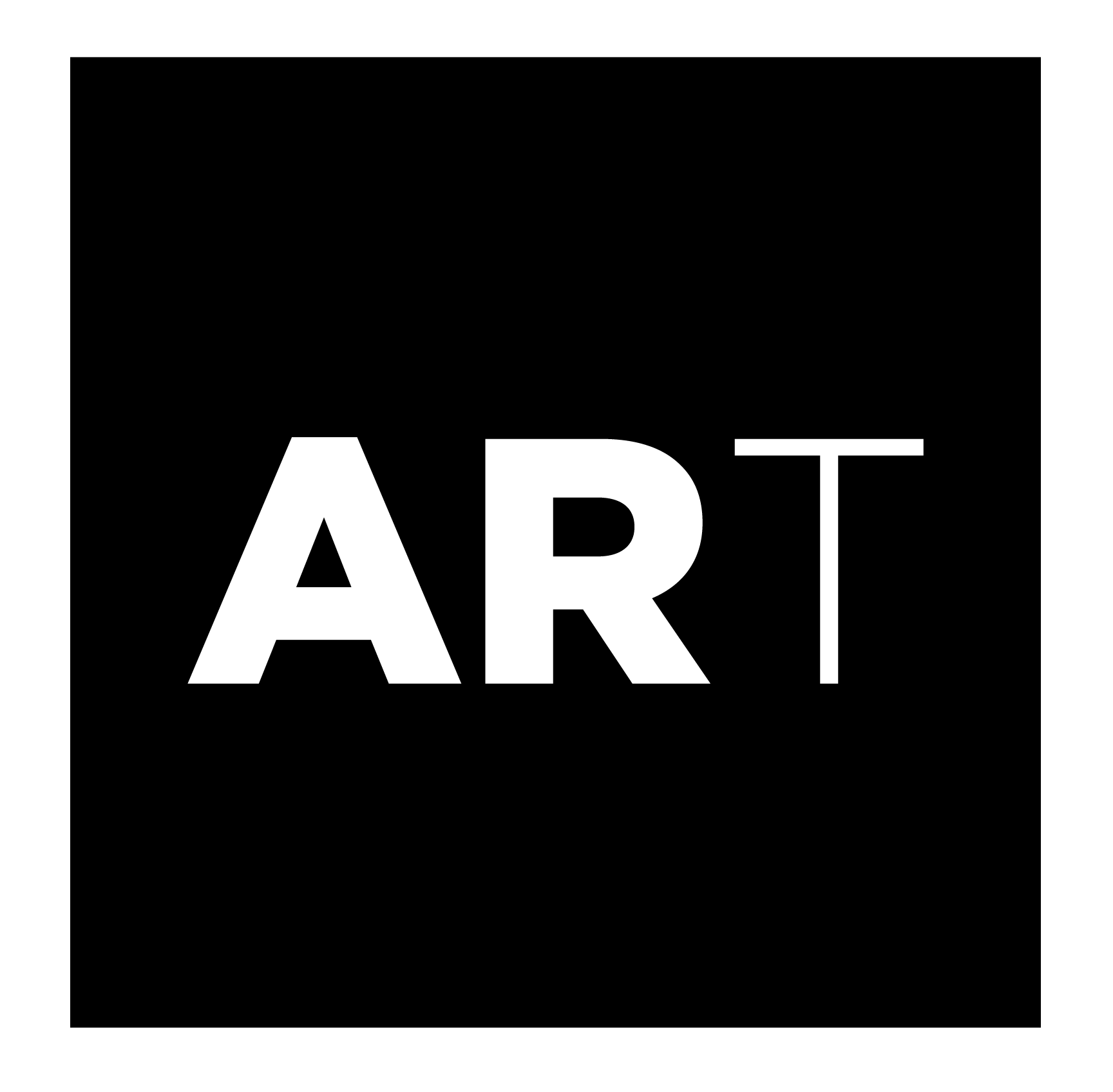| Volume 21 Number 25 | August 28, 2020 |
Place-Based Critical Art Education: An Action Research
Ayça Sesigür
Muğla Sıtkı Koçman University, Turkey
Şemsettin Edeer
Anadolu University, Turkey
Citation: Sesigür, A., Edeer, S. (2020). Place-based critical art education: An action research. International Journal of Education & the Arts, 21(25). Retrieved from http://doi.org/10.26209/ijea21n25.Abstract
Place-based critical art education (PBCAE) blends an emphasis on place-based education and ecology with the cultural focus of critical pedagogy, the intention being to provide education that takes the ecological, cultural, social and political issues of a place into account. With this goal in mind, visual arts teachers are expected to utilize places as resources. It is thus important for visual arts teacher candidates to experience PBCAE, as this will allow them to discover and interpret the role of their place of residence in the creation of art, and to learn how to integrate place into the teaching process. This study shows how PBCAE can help candidate teachers to develop their artistic expression skills and to connect their experiences in this process with art education. The study adopts a qualitative research approach and an action research design, and was conducted with the participation of candidate teachers in six focus groups as part of the Main Art Workshop-III course in the 2015–2016 academic year. Data for the study was collected through observations, semi-structured interviews, participant and researcher diaries, and the participants’ art works. This data was analyzed using an inductive analysis technique. It was found that the individual and collective relationships formed with a place were experienced in an integrated manner in natural, cultural, aesthetic and critical terms, and that these experiences were associated with daily life and subsequently reflected in the art making practices. In conclusion, dialogue-based communication involving discussions, interactions and cooperative efforts was found to contribute to the development of the critical thinking skills and place awareness of candidate teachers, and encouraged the making of associations between place, art and education.
Visual Abstract
This article is available in PDF format.
